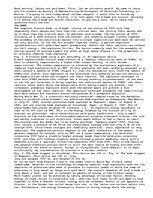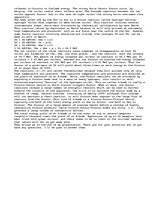-
Nuclear Weapons
The net results of the three reactions taken together is disappearance of five 2H nuclei and formation of 3He, 4He, one free proton , and two neutrons, with the release of 24.3 MeV. The amount of energy released per nucleon of reactant is 24.3 MeV per 10 nucleons = 2.43 MeV per nucleon, whereas for the fission of uranium the energy released per nucleon of reactant is 200 MeV per 235 nucleons = 0.85 MeV per nucleon. Thus the fusion of a given mass of 2H will yield about three times as much energy as the fission of an equal mass of 235U.
The reactions (1)-(3) are called thermonuclear because they will proceed only at very high temperature and pressure. The requisite temperatures and pressures are attained at the place of explosion of an A-bomb. Hence, the fusion reactions can be initiated by exploding a fission bomb next to a mass of heavy hydrogen; this results in self-sustained explosive "burning" of the hydrogen nuclei. This so-called H-bomb is really a fission-fusion device in which fission triggers fusion. What is more, the fusion reactions release a large number of energetic neutrons which can be used to further enhance the violence of the explosion: the trick is to surround the fusion bomb by a blanket of cheap, natural uranium, consisting of mainly 238U; although this isotope will not maintain a chain reaction, it will fission when exposed to the large flux of neutrons from the fusion. This kind of H-bomb is a fission-fusion-fission device; typically one-half of the total energy yield is due to fusion, one-half is due to fission.
…


